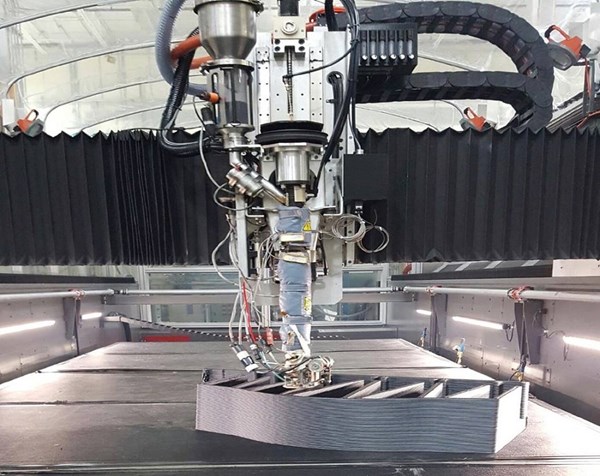More High-Performance Materials for Additive Mfg Emerge
Included are high-temperature formulations for 3D-printed tooling.
Two companies have just unveiled their latest developments in high-performance materials for additive manufacturing and, as we reported recently, the materials continue to evolve and impress.
● DuPont Performance Materials: At the recent 2017 Additive Manufacturers User Group (AMUG) conference and expo in Chicago (March 19-23), showcased new high-performance materials in filament forms of Zytel nylons, Surlyn ionomers and Hytrel thermoplastic elastomers. They are designed for the FFS (fused filament fabricaton) process, also referred to as FDM (fused deposition modeling).

DuPont expects the expansion of these proven materials used in various applications in a wide range of industries into the realm of 3D printing to provide users with the benefits of the technology—greater design freedom, lightweighting and reduced product development, allowing for rapid prototyping, part production and mass customization.
In presenting these materials at the conference, business development leader Rahul Kasat said:
“We believe these products will help our customers meet their needs for prototyping and manufacturing using 3D printing as this technology continues to get adopted across multiple industries.”
● Techmer PM: The specialty color and additives masterbatch supplier and custom compounder continues to be among those on the forefront of new formulations for additive manufacturing. This time, the company custom formulated high-temperature polymer materials with carbon fiber. This was in collaboration with several key industry partners to develop tooling equipment via additive manufacturing.

In addition to aerospace and military, the 3D-printed tools have been designed for large-scale transportation—as the automotive sector in also now investing in this promising area, as well as industrial applications. On this 3D tooling development, Techmer PM collaborated with Oak Ridge National Laboratory (ORNL), U.S. Naval Air Systems Command (NAVAIR), Boeing, TruDesign, and BASF. The company characterizes the compounds, used by ORNL to 3D print the tools, as based on “proprietary high-temperature formulations capable of withstanding repeat autoclave cycles.”
Asked about the material used for the tooling, Techmer will only confirm that they are thermoplastic, adding “these compounds are based on proprietary high-temperature formulations capable of withstanding repeat autoclave cycles.” The company also told us that the tooling could be used for stretch forming metal parts, SMA (shape memory alloy) sheet forming, thermoset/carbon fiber composite layups, and even autoclavable type tooling.
During testing, the 100% 3D printed tools successfully endured multiple autoclave cure cycle, withstanding temperatures over 355 F and pressures of 90 psi.
The tools were printed on Cincinnati Inc.’s Big Area Additive Manufacturing (BAMM) machine and machined on a Thermwood 5-axis CNC machining center—both housed at ORNL’s manufacturing demonstration facility. Surface finish of the tools was conducted by TruDesign. As previously reported, BAAM extrudes hot thermoplastics to build parts or tooling layer-by-layer, similar to an FDM machine.
Related Content
-
ICIS Launches: Ask ICIS Generative AI Commodities Assistant
Said to be the first of its kind, this AI assistant will enhance access to ICIS’ intelligence and insights for the energy and chemical markets.
-
Scaling Up Sustainable Solutions for Fiber Reinforced Composite Materials
Oak Ridge National Laboratory's Sustainable Manufacturing Technologies Group helps industrial partners tackle the sustainability challenges presented by fiber-reinforced composite materials.
-
Prices Bottom Out for Volume Resins?
Flat-to-down trajectory underway for fourth quarter for commodity resins.















